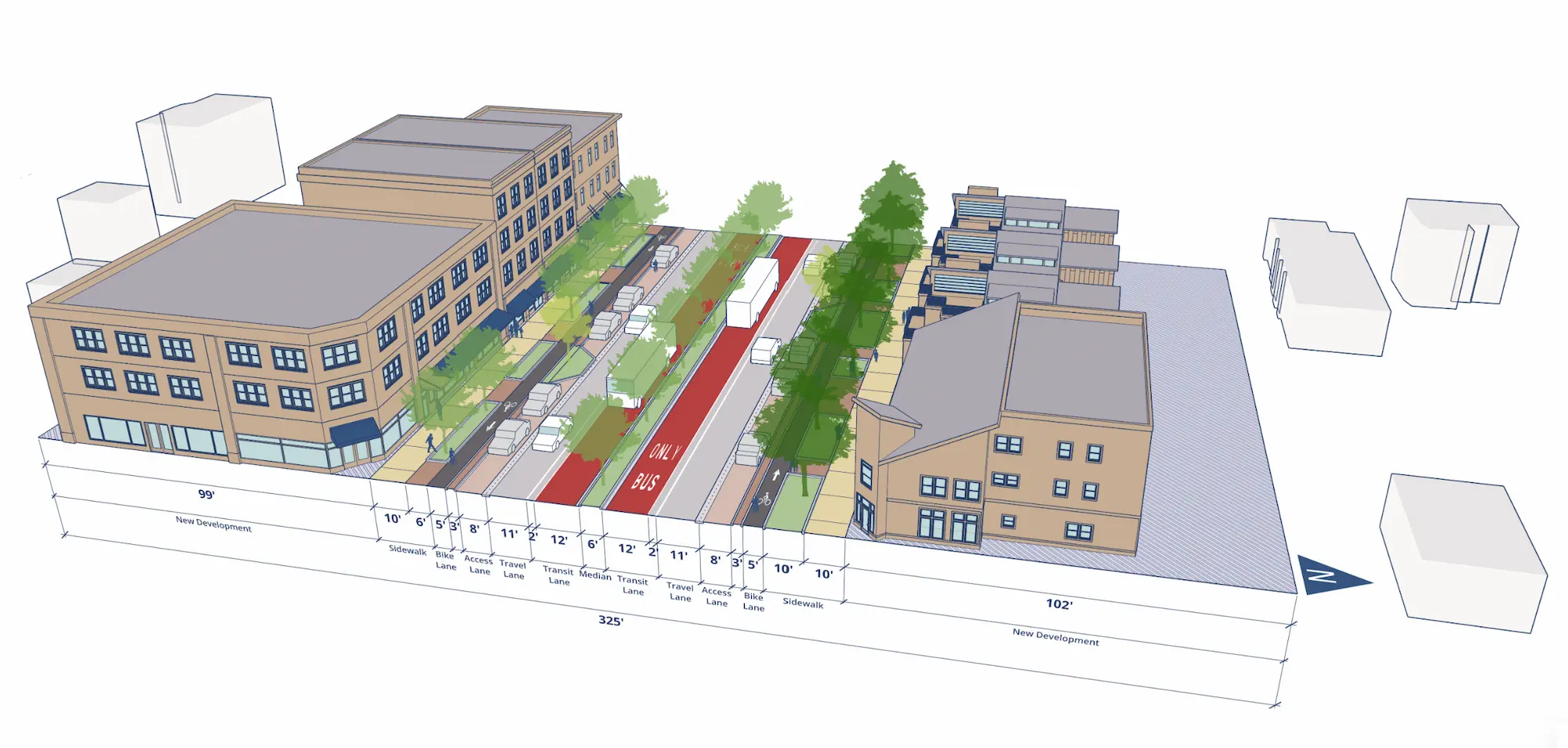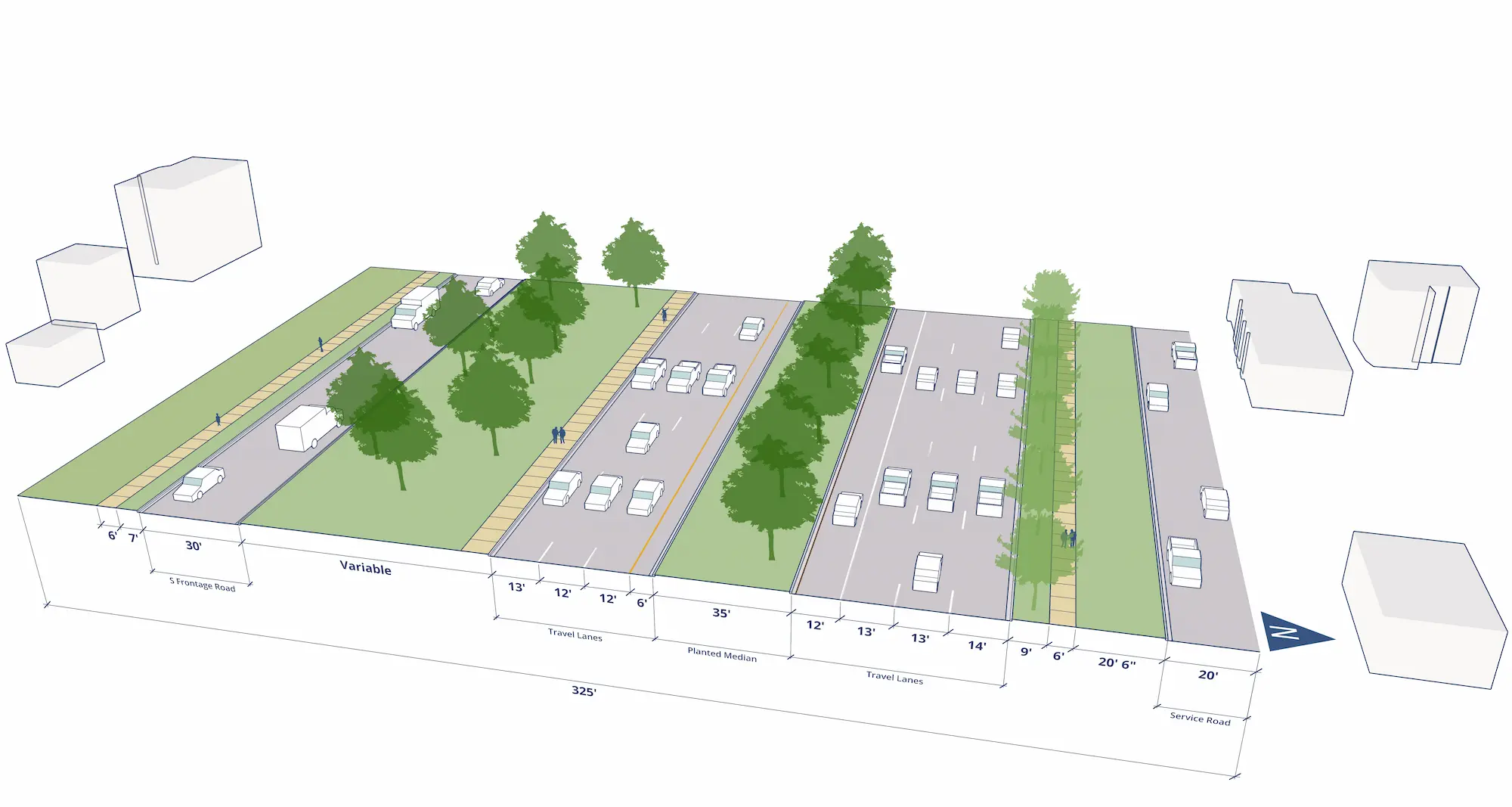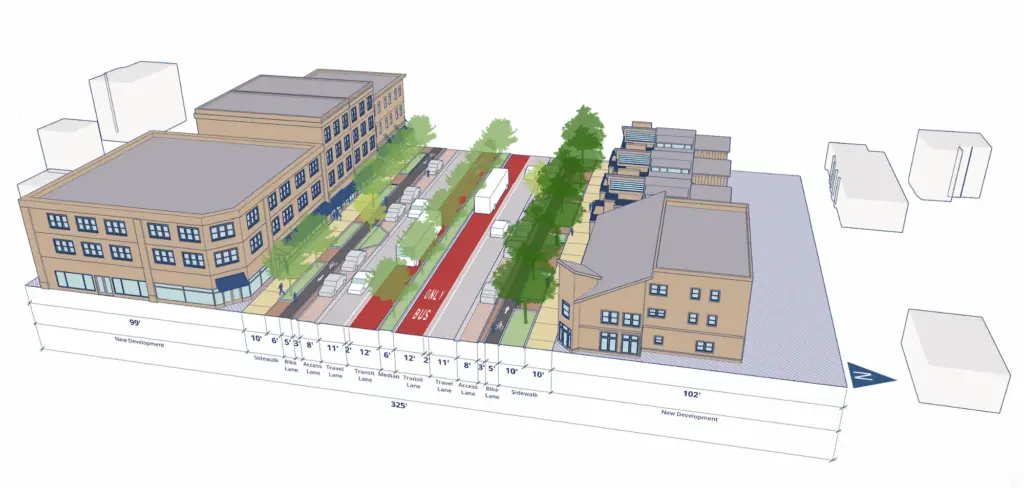
MnDOT is now taking feedback on four initial project designs for the future of Olson Memorial Highway in Minneapolis. Thanks to community support, these include options that would restore a walkable main street in the Near North. Here is what you need to know when filling out the survey and how you can support the movement to Bring Back 6th.
MnDOT is collecting input on these initial designs before refining them this fall. Now is an important time to share your feedback to ensure the options reflect community priorities. The survey closes on May 1, 2024.
The pavement on Olson Memorial Highway is breaking down and this project will determine what the corridor will look like for the next fifty years. This is a generational opportunity to repair historic and ongoing harms and create a street that returns land to the community and prioritizes the health and wealth of surrounding residents.
Another thing to note is that near-term safety improvements are also needed. Last year, MnDOT installed some watered-down changes, but they felt far short of community expectations. We will continue to organize for a lower speed limit, bike lanes, improved crosswalks, and other long-needed changes to ensure that residents do not have to be stuck with a dangerous roadway until the full rebuild occurs.


Renderings are Not to Scale
One key thing to know is that the renderings are not to scale. The images in MnDOT’s survey do not visualize how land could be repurposed for community uses, which is a key benefit of rightsizing the roadway. If the street were reduced to one traffic lane in each direction (with bus and bike lanes), it would free up a significant amount of space for new buildings, parklands, and gardens, slow traffic speeds, and narrow the crossing distance.
Survey Structure
The survey starts with some brief demographic questions before asking for feedback on each of the four proposed designs. For each design, you are asked to share your thoughts on how the design would impact walking, biking, public transit, and driving.
After the table, MnDOT includes two open-ended questions:
- Tell us more about your choices in the question above.
- Please share any other thoughts you have about this alternative
To support the Bring Back 6th vision, here are some comments you can make about the four MnDOT project alternatives.
Option #2 is the most reflective of the Bring Back 6th vision. Two lanes of traffic are adequate for serving car traffic on the corridor and dedicated space for transit, biking, walking and greenspace would make this street a comfortable place for all people to use. Option #2 would also maximize the amount of land that could be returned to the community for new housing, businesses, parks and other neighborhood amenities. We encourage you to support option #2 in the survey and share your thoughts about how it can be best implemented.
Option #4 is a unique option that separates a busway from general car traffic, with a grassy median and bikeway in between. While this option would significantly improve safe and accessible transportation options, key questions about this project option remain. The rendering shows a 3 lane roadway with no median. This would create speeding and safety issues and would also unnecessarily consume land that would otherwise be put to other uses.
Option #3 (above) offers many of the same benefits as option 2 but has two major differences. The first is that the bus lanes are located in the center of the street. Center-running bus lanes have significant benefits, including faster travel times and less conflict with sidewalk activity. However, option #3 adds an extra lane on the eastbound portion of the street. This would create an unnecessarily wide street that would incentivize speeding and jeopardize safety. Traffic could easily be accommodated with two lanes. We encourage you to urge MnDOT to update option #3 to remove the extra lane.
Option #1 (above) would continue to prioritize suburban drivers over the health and well-being of the Near North. Instead of a walkable main street, it would rebuild four lanes of traffic with no dedicated space for buses. The multiple lanes would create wide crossing distances, enable speeding, and eat up precious space that could be repurposed for new housing, parks, businesses, or other uses determined by the community. We encourage you to tell MnDOT that option #1 falls short of community expectations.
Support immediate safety improvements on Olson.
While the corridor’s long-term future is being planned, immediate safety improvements are also needed. Last year, MnDOT installed some changes, but they fell far short of community expectations. We will continue to organize for a lower speed limit, bike lanes, improved crosswalks, and other long-needed improvements to ensure that residents do not have to be stuck with a dangerous roadway until the full rebuild occurs.